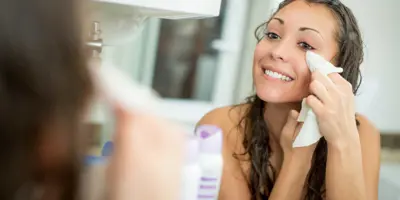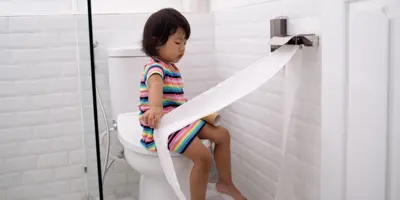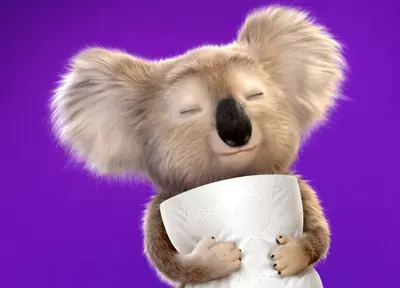3 people found this helpful

Using tissues to curl hair without heat has more benefits than simply protecting your hair. Strong and absorbent tissues soak up excess water, making the drying process quicker than with curlers. Plus, tissue curls are soft and comfortable to sleep in, meaning you can achieve gorgeous heatless curls overnight!
It’s so easy to curl hair without a curling iron – creating bouncy and natural-looking curls without heat – that you’ll never want to go back! Find out how to make your hair wavy without heat, overnight or a few hours before an event, right here.
How to curl hair without a curling iron: what you’ll need instead
Your checklist for tissue curls couldn’t be simpler! All you need is a packet or box of tissues, some water and a hairbrush. To keep a firm hold on the curls with the tissues while they dry, you’ll need very strong tissues, like Cushelle Quilted. If you have very long or thick hair, you may need to keep a second packet of tissues handy.
When you curl hair without a curling iron, you will also have to set aside at least two hours for your hair to dry completely into beautiful curls. Line up some other activities to keep you busy or prepare your hair just before you go to bed so that your hair dries into curls overnight.
Strong Cushelle tissue paper are perfect for this method. They are soft on hair cuticles, but they’re also really strong, so they’ll keep your tissue curls securely fastened for the best results.
Using tissues to create curls without heat
First, you’ll need to fold the tissues into strong strips.
- Unfold a tissue on a table in front of you diagonally so that a corner is pointing towards you.
- Starting from the corner, fold it over by around 1cm away from you.
- Continue folding the tissue over in this way, smoothing it down every time, until it is folded many times over into a narrow strip.
- Repeat with the rest of the packet.
Now you have your curling strips, here’s how to curl hair without heat!
- Lightly dampen a hairbrush with water.
- Brush your hair thoroughly with the damp hairbrush until your hair is damp, but not fully wet.
- Divide your hair evenly into around 8 sections. If you have very long or thick hair, you might need to divide it into more sections. Make sure each section of hair is dampened.
- Starting from the first strand, place the tips onto the middle of your tissue curling strip.
- Carefully roll the hair up around the strip by turning it over in your fingers until you get to the roots.
- Gently tie the ends of the tissue strip together with a knot like the first knot of your shoelaces, and tighten it closed over the hair, keeping it in place rolled up at the top of your head.
- Repeat with all the other sections and tissues. If there was too much hair in the first section to hold up with the tissue, you may need to divide your hair into more sections.
Now your hair is all prepared for curls, without any heat styling involved! The next step is to be patient and leave your hair alone for at least two hours. If you need to hurry the process, use a hairdryer on a gentle heat, ideally with a diffuser head. You could alternatively sleep with your hair in the tissue curlers, to get low-effort, heatless curls overnight.
After your hair is fully dry, you can take out the tissues – either by untying them or gently ripping them open. Loosen your curls gently with your fingers, and spritz your head with hairspray if you want longer-lasting curls.
Now you know how to make your hair wavy without heat, overnight or pre-event, you can enjoy a bouncy, healthy head of curls any time!
Related articles
5 beauty hacks that will streamline your on-the-go routine
A clean and organised makeup bag means a smooth and hygienic beauty routine. Read on for the makeup beauty hacks and makeup tips and tricks that’ll streamline on-the-go pampering.

How to get clean makeup brushes in 5 easy steps
Learn how to clean make-up brush bristles with our simple step-by-step guide to washing makeup brushes. Find more easy tips and advice here.

A guide to healthy urine: colour chart and meaning of your pee colour
Do you know what healthy urine colour looks like? Or the signs of dehydration or infection? Learn the urine colour chart and meaning to check your health.

What is a normal stool colour? A guide with poo chart
What is a normal stool colour? Discover everything you didn’t know you needed to know about poo using our stool chart and handy guide.

How to poo properly: 4 tips for the correct way to poop
We've put together this handy guide packed full of tips for happier, more healthy bowel movement. Read on for our 4 tips for how to poo properly!

Why do men pee while standing?
Being able to urinate standing can come with unexpected challenges. Wondering how to pee properly? Men: here’s some advice on urinating; sitting or standing.



